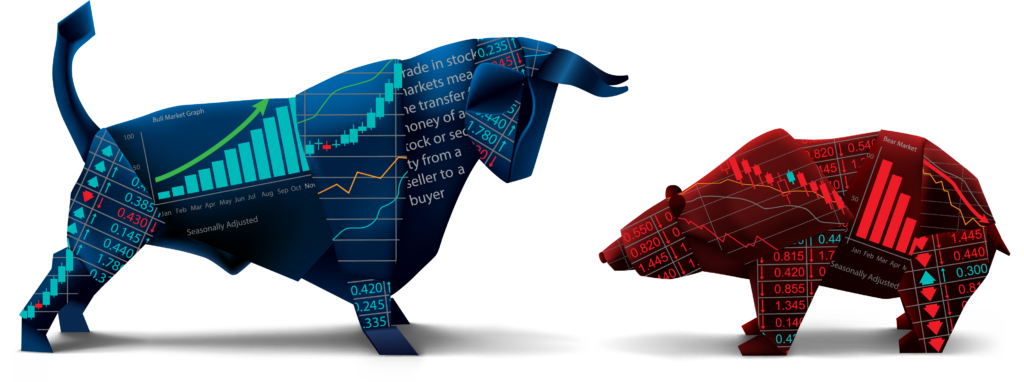Growth Stocks Vs. Value Stocks, The Untold Reality

Growth Stocks Vs. Value Stocks, The Untold Reality
When considering Growth Stocks Vs. Value Stocks the untold reality, I’d like to share the following with you. Russell Investments makes the case in its “2021 Equities Outlook – Values Time to Shine?” that value stocks will outperform growth stocks for years to come. Much of their case rests on “regression to the mean” theory given significant underperformance by value stocks relative to growth stocks over the past 15 years. For Russell investments to suggest that value stocks will outperform growth stocks based on regression theory is simplistic and ignores the underlying fundamentals that favor growth stocks.
Russell 1000
The Russell 1000 Growth ETF enjoyed a banner year in 2020 with a return of 38.2% compared to 2.7% for the Russell 1000 Value ETF. Fortunes flip-flopped in February as the Value ETF beat the Growth ETF by 9.8% versus -1.1% for its best relative showing in any month since 2001. In March, Bank of America jumped on the value bandwagon proclaiming that “value stocks will continue to beat growth after record outperformance in February.”
Wiesenberger Mutual Fund Report
The Wiesenberger Mutual Fund Report traces fund performance by style each year starting in 1959 and ending in 2004. It shows that a $100 investment in growth funds would have grown to $9,380 by the end of 2004. The same $100 investment in value stocks would have grown to $7,046. Hence, the growth style established a premium of 33% relative to the value style over 46 years.
Now let’s take a look at the performance of the Russell Growth and Value ETFs in the past fifteen years.
Cumulative Returns for Periods Ending 2020
| Time Frame | R1000 Growth ETF |
R1000 Value ETF |
Growth Premium |
|---|---|---|---|
| 5 years | 170% | 75% | 133% |
| 10 years | 349% | 164% | 113% |
| 15 years | 426% | 130% | 228% |
Sources: Russell, Target QR Strategies
It can be seen that growth premiums have widened significantly in each time period relative to the Wiesenberger growth premium of 33% earned over 46 years. It should also be mentioned that Growth won out in 10 of 15 years. Why then have growth stocks significantly outperformed value stocks in the past 15 years?
There has been a seismic shift in the US economy that has carried over to the stock market. During the period when Wiesenberger tracked fund performance, value companies displayed sensitivity to economic cycles which continues to this day. When the economy turned down, so did their sales and profits. When the economy turned up, so did their sales and profits. Sometimes profits would rise to record levels on the upturn.
Until the turn of the century, the U.S. economy was heavily influenced by industrial companies before technology companies came of age. Apple came public in 1980 with an IPO of $101 million (not billion). Microsoft came public in 1986 and Amazon in 1997.
As late as 2010, there were only two technology stocks among the five largest by market cap in the S&P 500 index. Today, the five largest are all technology stocks – Apple, Microsoft, Amazon, Facebook and Google. These five stocks fall into growth stock nomenclature and represent an unprecedented 22% of overall weighting of the S&P 500 as of year-end, according to the findings of Target QR Strategies. Each of the big five reported record earnings in 2020 with an average gain of 38% whereas S&P 500 earnings declined 16%.
Target QR Strategies
Target QR Strategies has argued and documented time and again that earnings growth is the key driver of stock prices. Many growth companies continue to report record earnings year in and year out. By comparison, earnings for many companies in the airline, banking, energy, and auto companies peaked many years ago, according to our research. This can be seen in the following table using 2019 for comparison, the year in which overall profits rose to a record high. (Using the pandemic year of 2020 would make the comparison even worse as five of the eight companies lost money in this year)
| Value Stock | Peak Year EPS |
2019 EPS vs. Peak EPS |
|---|---|---|
| American Airlines | 2015 | -60% |
| United Airlines | 2015 | -41 |
| Bank of America | 2006 | -39 |
| Citigroup | 2005 | -83 |
| Chevron | 2011 | -89 |
| Exxon | 2011 | -65 |
| Ford | 2011 | -99 |
| General Motors (new stock*) | 2016 | -24 |
*GM went bankrupt; reentered business with an IPO in 2010
From 2015 to 2019, corporate profits rose 62% to an all-time high. However, earnings for the value companies in the above table have been in a downward trend for years. Even with improvement this year, earnings progress for each company will still fall far short of their prior peaks set many years ago.
Unlike most market commentaries which lean toward value stocks, we conclude that value stocks have gotten ahead of themselves and that their dominance may not last very long. Thus far this year, their stock prices have risen considerately more than their expected earnings improvements, as seen in the next table. In addition, expected earnings gains for the three companies that were profitable last year appear lackluster when compared to expected growth of 22% in overall corporate profits.
| Company | 2020 EPS Growth | 2021 Est EPS Growth | 2021 Price Gain YTD |
|---|---|---|---|
| American Airlines | Deficit | Not Meaningful | 48% |
| United Airlines | Deficit | Not Meaningful | 29 |
| Bank of America | -32% | 14% | 32 |
| Citigroup | -62% | 20 | 21 |
| Chevron | Deficit | Not Meaningful | 26 |
| Exxon | Deficit | Not Meaningful | 40 |
| Ford | Deficit | Not Meaningful | 37 |
| General Motors | -5% | 21 | 38 |
Target QR Strategies has strong doubts that value stocks can maintain their newfound leadership in the stock market. Many growth companies, and technology companies in particular, are expected to produce record earnings in 2021 and 2022, whereas value company profits will remain depressed against prior peak levels. The chasm in profits between the two styles will continue to widen which should work to the advantage of growth stocks. In conclusion, TQRS believes that the party is not over for growth stocks and that growth stocks will retake the lead in the market before the year is out.
To receive our free newsletter, contact us here.
Subscribe to our YouTube Channel for more updates.
Considerately yours,
GROCO, GROCO Tax, GROCO Technology, GROCO Advisory Services, GROCO Consulting Services, GROCO Relationship Services, GROCO Consulting/Advisory Services, GROCO Family Office Wealth, and GROCO Family Office Services.
Persistence – Use Good Judgment
Persistence – Use Good Judgment Nothing in the world can take the place of Persistence. Talent will not; nothing is more common than unsuccessful men with talent. Genius will not; unrewarded genius is almost a proverb. Education will not; the world is full of educated derelicts. Persistence and determination alone are omnipotent. The slogan “Press…
Feeding a Dream
Feeding a Dream Taking Tex-Mex to Bangalore by Elizabeth Bowden-David Christopher Columbus, as the story goes, pursued a dream of India and landed on American shores. I, too, set out on a journey to India, but my dream was launched from American shores. Eight years ago, I moved with my Indian-born husband from California to…
Increase Employee Compensation for Work-Related Expenses
Increase Employee Compensation for Work-Related Expenses The California Supreme Court recently tested the boundaries of Labor Code section 2802, ruling that employers may increase employee compensation by a fixed amount instead of reimbursing employees for work-related expenses. California Labor Code section 2802 requires employers to indemnify (reimburse) employees for all necessary expenses incurred as a…
Motivating Employees Through Today’s Economic Crisis – Executive Strategies
Are you motivating employees through today’s economic crisis, you will find some executive strategies below helpful. Tough Times Call for Tough Measures, Rallying the Troops, Circling the Wagons, Bunkering Down may all seem like maxed-out maxims in today’s ailing economy, but what other rallying cries can today’s executives call on? As layoffs and cutbacks ravage…




